If, for example, a stock is trading with an ask price of $20, then a person wishing to buy that stock would need to offer at least $20 to purchase it at current price. The gap between the bid and ask prices is often called the bid-ask spread. The difference between bid and ask prices, or the spread, is a key indicator of the liquidity of the asset. The bid and ask sizes are the number of stock or other securities that traders will buy or sell at a specific bid price or ask price. This is usually represented in lots of 100, meaning an ask size of four means 400 units are available at that price. The larger the bid or ask size, the more liquidity a security has in the market.
- The amount you actually pay is determined by the ask price when your order executes.
- If the ask is at $1.00 but your large purchase order cuts into the next level prices ($1.02, $1.05, and so on), you pay more in total.
- When the bid and ask are close to the same amount, it means there’s volume and liquidity in the stock.
- In contrast, almost 7% of the entire global population owns cryptocurrencies.
- To make it less confusing for traders, most forex brokers display “Sell” instead of “Bid” and “Buy” instead of “Ask” on their trading platforms.
What is the bid price in cryptocurrency trading?
Market makers earn money from the bid-ask spread because they’re constantly buying at the bid price and selling at the slightly higher ask price. The difference doesn’t amount to much for ordinary investors, but when it’s applied to millions of transactions, it adds up to serious profits for financial institutions. Quotes will often also show the number available at both the current best bid and ask prices.
Why does the bid-ask spread widen during high volatility?
Eventually, a price will be settled upon when a buyer makes an offer which their rivals are unwilling to top. This is quite beneficial to the seller, as it puts a second pressure on the buyers to pay a higher price than if there was a single prospective buyer. On the other hand, securities with a “wide” bid-ask spread (where the bid and ask prices are far apart) can be time-consuming and expensive to trade. The bid price would become $10.05, and the shares would be traded until the order is filled.
Penny Stock Basics
- In the context of CMC Markets’ trading platform, the bid and ask prices are represented by ‘BUY’ and ‘SELL’ respectively in any price quote window.
- In my years of trading, I’ve found that understanding the ask price is just as crucial as knowing the buy bid.
- In my trading courses, I teach students to be cautious of markets with large bid-ask spreads.
- Those with larger trading volumes tend to have many buyers and sellers in the marketplace, and therefore will have smaller bid-ask spreads than those that are traded less often.
For instance, if something about an asset’s behavior doesn’t align with your understanding or expectations, it might be a “point” worth exploring further. Market veterans often develop a lot of instincts that guide them when data might be inconclusive. However, it’s essential to remember that gut feelings should not replace comprehensive research and analysis. In my experience, understanding the role of market makers can give you an edge in the market. They’re the ones who set the playing field, and knowing their strategies can help you navigate it more effectively. In my years of trading and teaching, I’ve found that a deep understanding of the bid and ask prices is essential for any trader.
Start Investing in Australia
Under competitive conditions, brokerage fees tend to be small and don’t vary. In such cases, the bid-offer spread measures the cost of making transactions without delay. Liquidity cost is the difference in ironfx forex broker overview price paid by an urgent buyer and received by an urgent seller.
Buying and Selling Stocks
For example, luxury items tend to have a higher asking price due to their perceived value and brand image. Websites, or “sites,” where you find information about an asset can also offer insights that affect your trading decisions. These sites might provide reviews, expert opinions, or other “things” that could offer you a different perspective on the buy bid and ask price.
Quotes will often best indicators for day trading forex show the national best bid and offer (NBBO) from across all exchanges that a security is listed. That means that the best bid price may come from a different exchange or location than the best offer. Generally, a bid is lower than an offered price, or “ask” price, which is the price at which people are willing to sell.
Transaction Costs
Those with larger trading volumes tend to have many buyers and sellers in the marketplace, and therefore will have smaller bid-ask spreads than those that are traded less often. The bid price is the amount of money a buyer is willing to pay for a security. It is contrasted with the sell (ask or offer) price, which is the amount a seller is willing to sell a security for.
On most platforms, the spread in the order book, with one side showing bids and the other showing asks, fluctuates in real-time. Before we dive into strategies or technical aspects of the concept, let’s quickly overview the bid and ask price. In this guide, we’ll break down what “bid” and “ask” mean in crypto, how they affect your trades, and how to use them to your advantage. The Motley Fool launched its Australian presence in 2011, and since then has grown to reach over 1 million Australians. This article contains general educational content only and does not take into account your personal financial situation. Before investing, your individual circumstances should be considered, and you may need to seek independent financial advice.
It’s a sign that the market may be less efficient, which can increase your trading risks. In my experience, passive trading can be effective for those who have a long-term investment focus. It’s all about balancing risk and reward while keeping transaction costs low. In my experience, understanding how prices are determined can give you an advantage in the market. It’s not just about charts and technical analysis; it’s also about understanding the mechanics of the market.
It’s the foundation upon which successful trading strategies are built. Market makers and brokers usually benefit from the bid-ask spread as they earn a small profit from each trade. The ask price represents the minimum amount a seller is willing to accept for an asset. It reflects the seller’s valuation and indicates the supply side of the market, playing a vital role in price discovery. The bid price is the highest amount of money a buyer is willing to pay for a particular commodity. Individuals and entities bid for various properties and securities from time to time, conveying the highest amount they are willing to pay to obtain ownership rights over them.
The bid price is an offer from a buyer to purchase a specific quantity of an asset. This price indicates what buyers believe the asset fxdd review is worth, considering various factors such as market conditions, economic data, and individual investment strategies. The bid price is always lower than the ask price, which is the minimum price sellers are willing to accept. In the context of stock trading, the bid price refers to the highest amount of money a prospective buyer is willing to spend for it.
Market makers earn money from the bid-ask spread because they’re constantly buying at the bid price and selling at the slightly higher ask price. But when it’s applied to millions of transactions, it adds up to serious profits for financial institutions. Bid and ask is a two-point price quotation that shows the best price investors are willing to offer for a transaction. The bid is the highest price buyers are willing to pay for a financial security, such as a stock, at a given point in time.
 (+34) 623 98 29 74
(+34) 623 98 29 74

